Buying peppers at the store leaves you with limited options. Why not grow some of the best tasting peppers at home instead?
Since starting Pepper Geek, we have grown hundreds of different pepper varieties, and tasted them all. So today, I’ll share the most delicious peppers we have tried to date. Most of these would make great pepper varieties for beginner growers.
Best Tasting Sweet Peppers
Sweet peppers come in many shapes and sizes. If you are used to growing your typical bell peppers, get ready to try something new and more exotic in your garden!
Looking for hot peppers? Skip ahead here.
Lesya Peppers
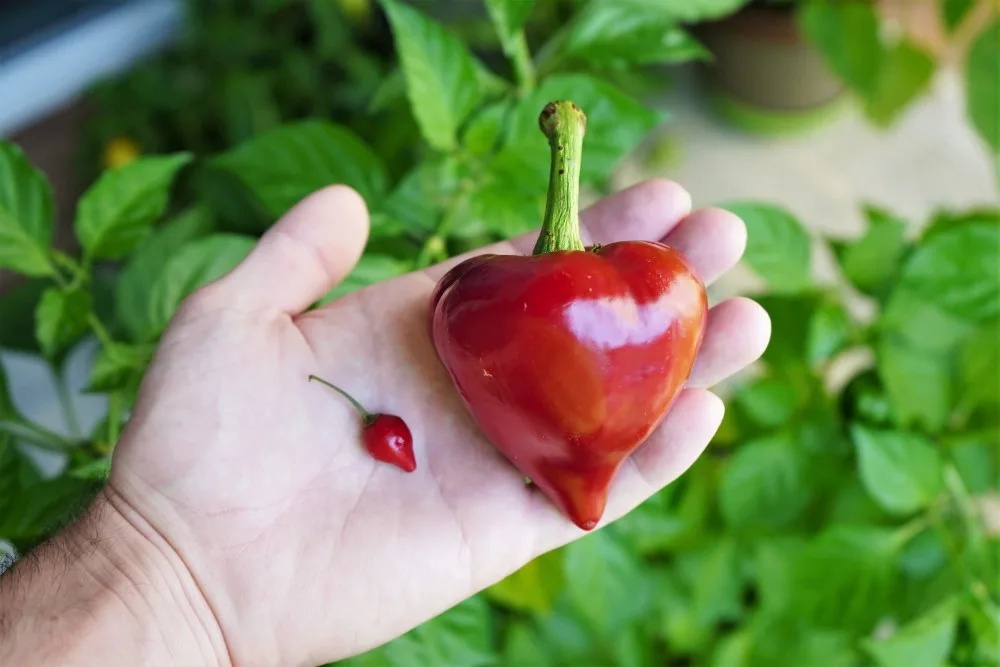
- Heat: None
- Flavor: Sweet and juicy
- Good for: Salads, stir fry, stuffing (upside down)
- Growing: Moderate (long germination)
- Productivity: Low
- Seeds: Rareseeds
The lesya pepper is a unique variety that has an incredibly sweet flavor. The peppers are also gorgeous in the garden, forming a large ‘pointed heart’ shape.
The plants are a bit smaller than a typical red bell pepper. However, the fruits are still impressively large, averaging about 3″ long by 3″ wide at the crown.
Productivity for the lesya pepper is pretty low, and we also had some issues with blossom end rot. However, the large, thick-walled pods are worth it for the super sweet flavor and crunchy texture.
Shishito Peppers
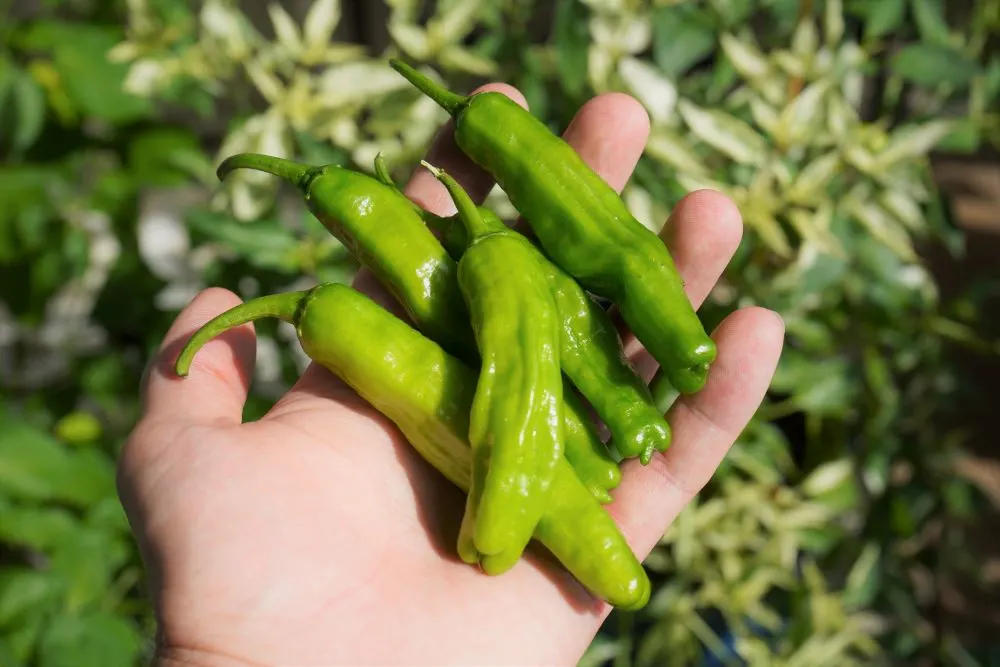
- Heat: None
- Flavor: Savory, crunchy
- Good for: Blistering with salt, roasting, pickling
- Growing: Easy
- Productivity: High
- Seeds: Botanical Interests
The shishito pepper comes from Japan and is the perfect pepper for snacking. Typically eaten pan fried with oil and salt, shishitos make for a great, quick appetizer.
These peppers are becoming more popular and easy to find in North America. However, growing them is also super easy. The plants are highly prolific, producing dozens of pods from 1.5-2′ tall plants.
Pods are typically harvested while still green, which takes just 60 days from transplanting. However, they will eventually ripen to a deep red color. They tend to begin dehydrating once ripe, so be sure to pick them promptly.
Habanada Peppers
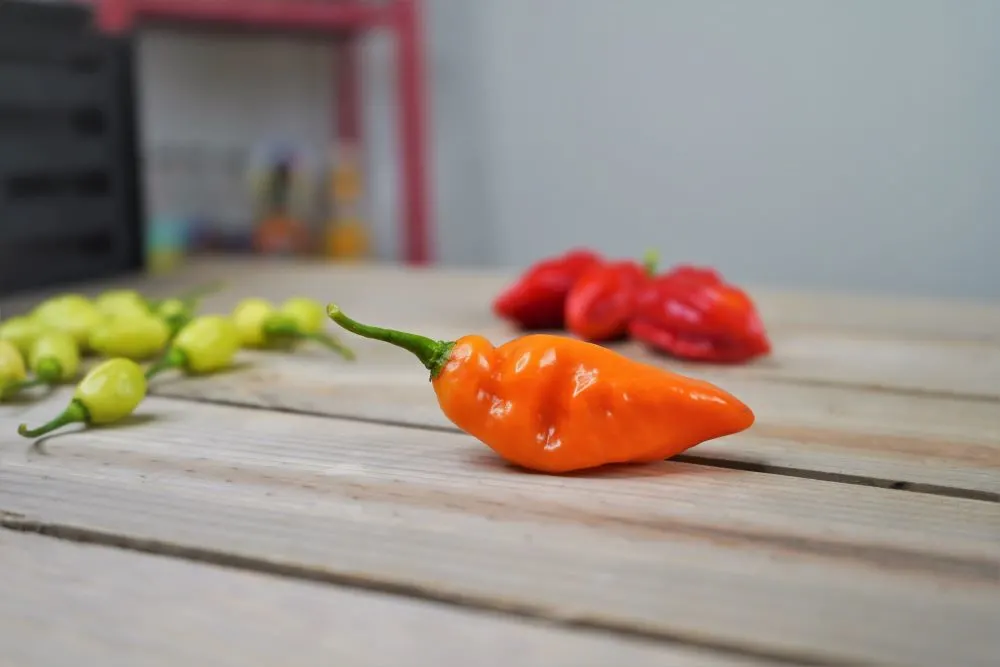
- Heat: None
- Flavor: Sweet and floral (similar to habanero)
- Good for: Mild hot sauce, powder
- Growing: Moderate (longer ripening period)
- Productivity: Medium
- Seeds: Burpee
The habanada was created by Michael Mazourek in the 2000s. The goal was to create a heat-free habanero pepper, and the result comes pretty close to it!
The habanada is a C. chinense species variety with a purely sweet flavor and no heat. If you have an aversion to spicy food, but want to experience the flavor of habaneros, this is a great option. Perfect for mild sauces, salsa, or making pepper powder.
Tip: Careful saving seeds from this variety, as peppers can readily cross pollinate with nearby plants. If you grow hot peppers nearby a habanada plant, the seeds may not grow true to type.
Jimmy Nardello Peppers
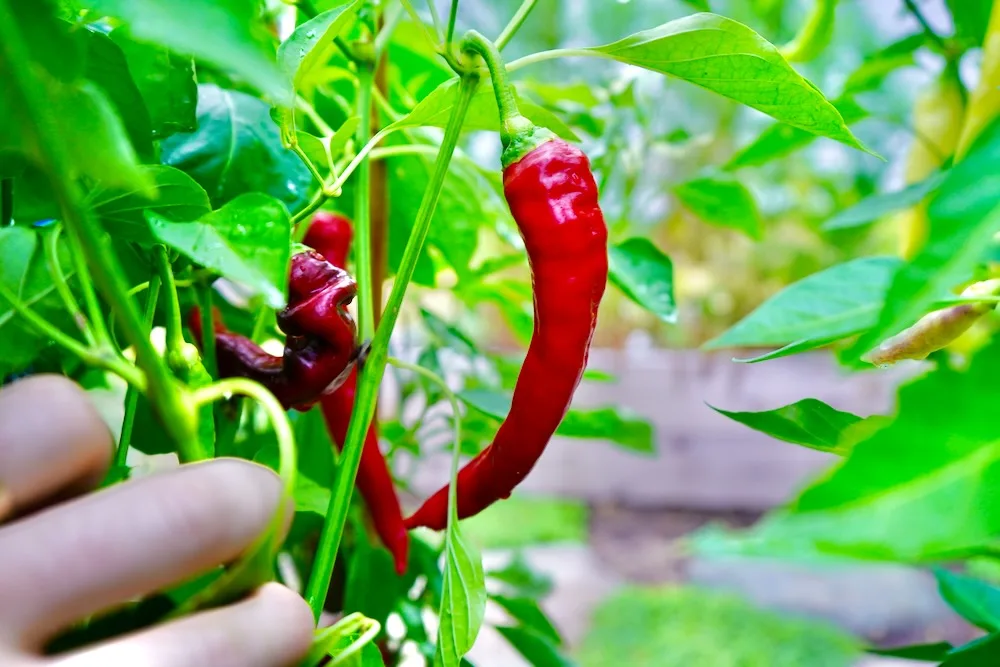
- Heat: None
- Flavor: Sweet and mild
- Good for: Frying, snacking, salads
- Growing: Easy and prolific!
- Productivity: High
- Seeds: Botanical Interests
If you are looking for a delicious sweet pepper, you should definitely taste the Jimmy Nardello. These long, chili-like pods are completely heat-free, and have a wonderful sweet and satisfying taste.
The plants also have a unique backstory, coming from Italy to Connecticut (our home-state!) in the late 19th century. They have flourished in the New England climate and apparently grow well almost anywhere.
If you want a stunning plant with early productivity, high yields, and amazing flavor, I can’t recommend Jimmy Nardello peppers enough. Get seeds here >
Marconi Peppers
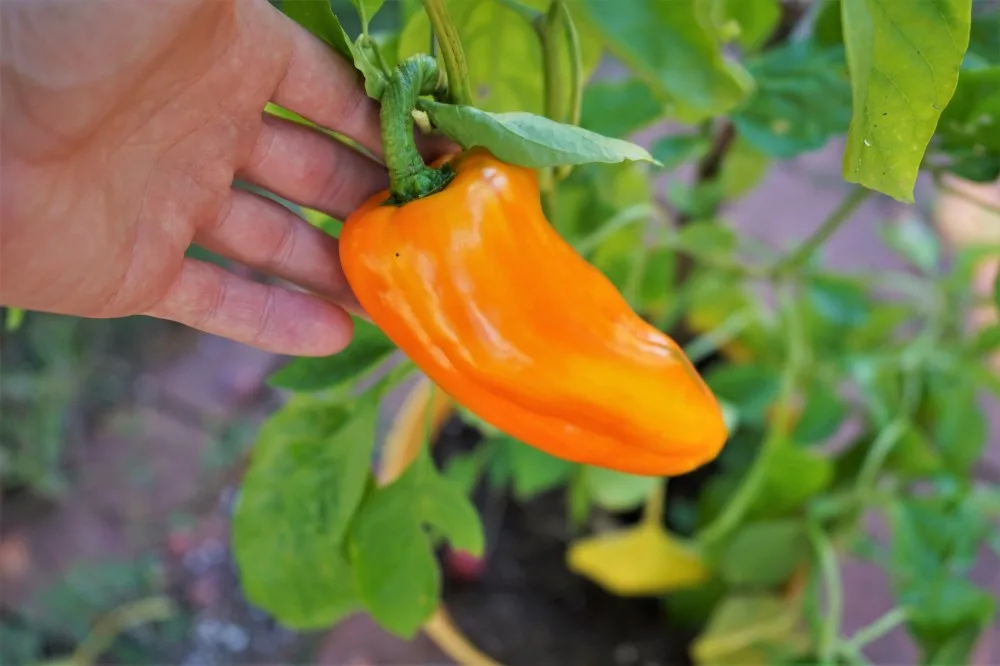
- Heat: None
- Flavor: Sweet and mild
- Good for: Roasting, stuffing, salads, grilling
- Growing: Easy
- Productivity: Medium
- Seeds: Seeds n such
This Italian heirloom is a great alternative to growing bell peppers. The plants produce long (5-8″) pods with slightly thinner walls. They also come in a variety of colors, from red to yellow to orange.
If you want to try a new, large sweet pepper variety with great flavor, the marconi peppers should be on your list. Great roasted with garlic and oil, stuffed, or eaten fresh.
The plants are medium sized (2-2.5′ tall) and produce a medium yield. They are easy to grow, though be sure to watch for pest problems when the peppers begin to ripen in the later season.
Best Tasting Hot Peppers
If you’re willing to venture into the world of growing spicy peppers, there are great treasures awaiting you. Here are just a few of our favorite hot peppers in terms of flavor.
Hatch Green Chile
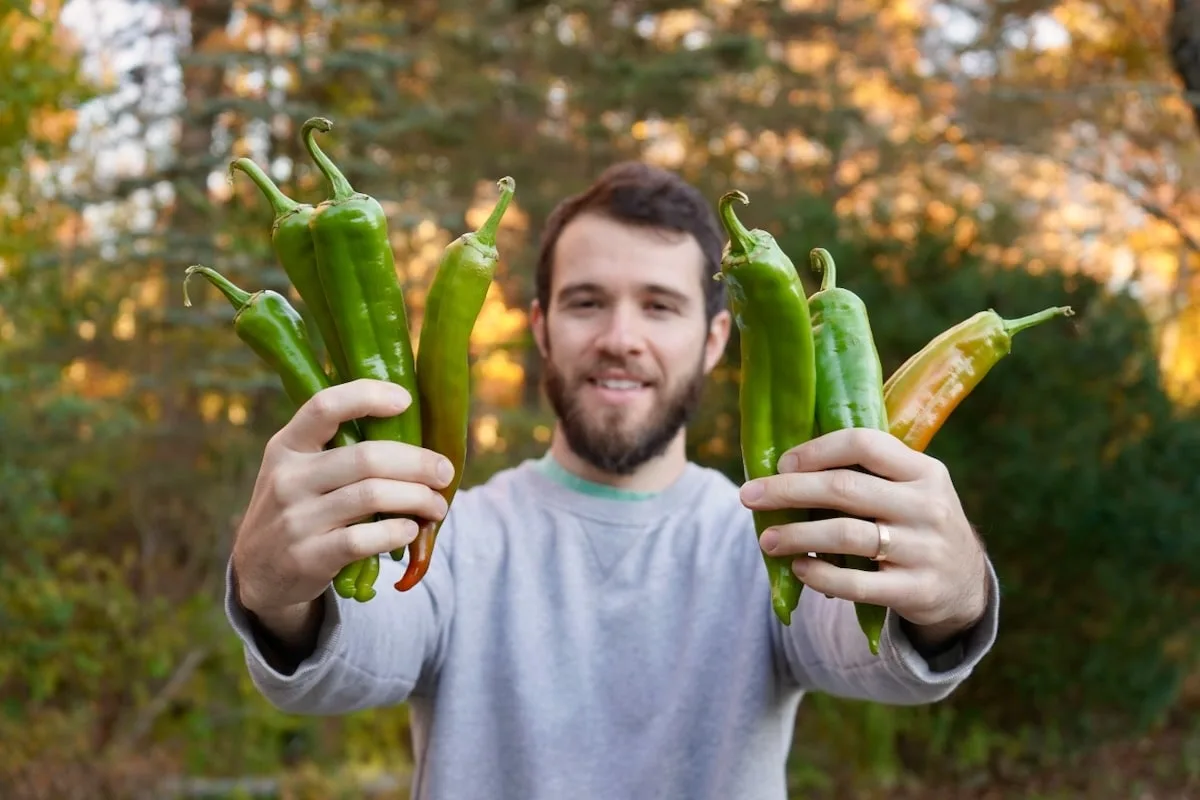
- Heat: Mild to hot
- Flavor: Earthy, smoky, rich, buttery
- Good for: Roasting and peeling, stuffing, powders
- Growing: Easy
- Productivity: Very high
- Seeds: Sandia Seed or Chile Pepper Institute
Hatch green chile is a way of life in New Mexico. These beautiful, large peppers have been grown for centuries in the Southwestern US, and they truly are a staple in the New Mexico diet.
After growing a few varieties of hatch chile ourselves, we completely understand why. They are picked while still green, roasted (or grilled), peeled, and added to basically anything. These are one of our favorite peppers to throw into mac and cheese.
The flavor is hard to describe, but there are smoky notes, and a mild, pungent kick that is unique to these chiles. I can recommend “Big Jim” (medium heat) or “Ms. Junie” (high heat) for growing at home.
Poblano Peppers
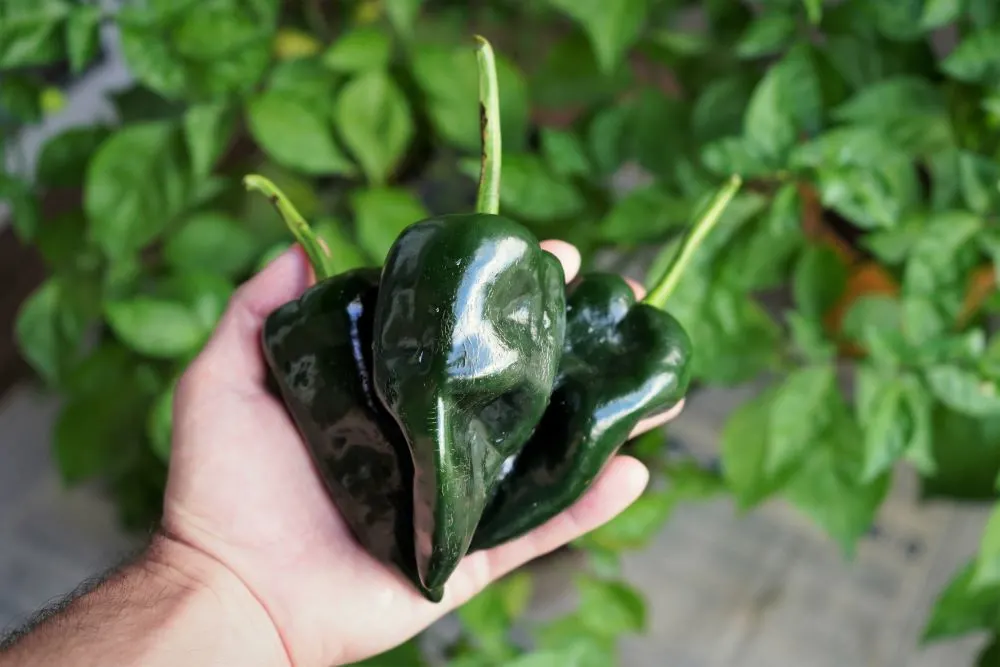
- Heat: Very mild
- Flavor: Sweet and smoky
- Good for: Ancho powder, stuffing, roasting, soup
- Growing: Easy
- Productivity: High
- Seeds: Botanical Interests
You can’t go wrong with growing poblano peppers. The low heat level is perfect for anyone sensitive to spice and the flavor is delicious.
Not to mention, poblanos are very prolific and large. They’re the perfect pepper for stuffing, frying, or roasting. Poblanos are also known as ancho peppers when dried.
Ancho peppers offer an amazing smoky, sweet flavor to soups and chilis. The dehydrated poblanos take on a fruity, grape-like aroma full of sweetness and mild heat. Amazing taste and essential to any chili powder!
Hot Banana Peppers
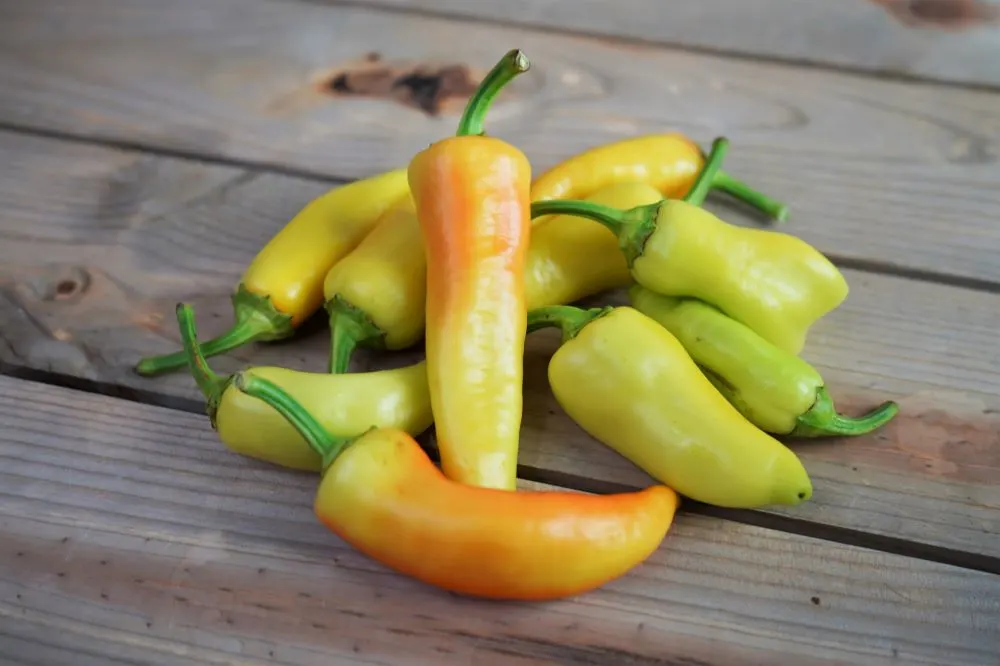
- Heat: Medium
- Flavor: Tangy, smoky
- Good for: Pickling, sandwiches
- Growing: Easy
- Productivity: High
- Seeds: Burpee
Banana peppers come in many forms, from purely sweet to medium spicy. If you want to make delicious pickled hot peppers for sandwiches, learn how to grow banana peppers.
They are also a great alternative to use for stuffed poppers. The thick walls hold up well to roasting and can be used for a variety of tasty appetizers. You can even use them to make a banana pepper hot sauce.
Sugar Rush Peppers
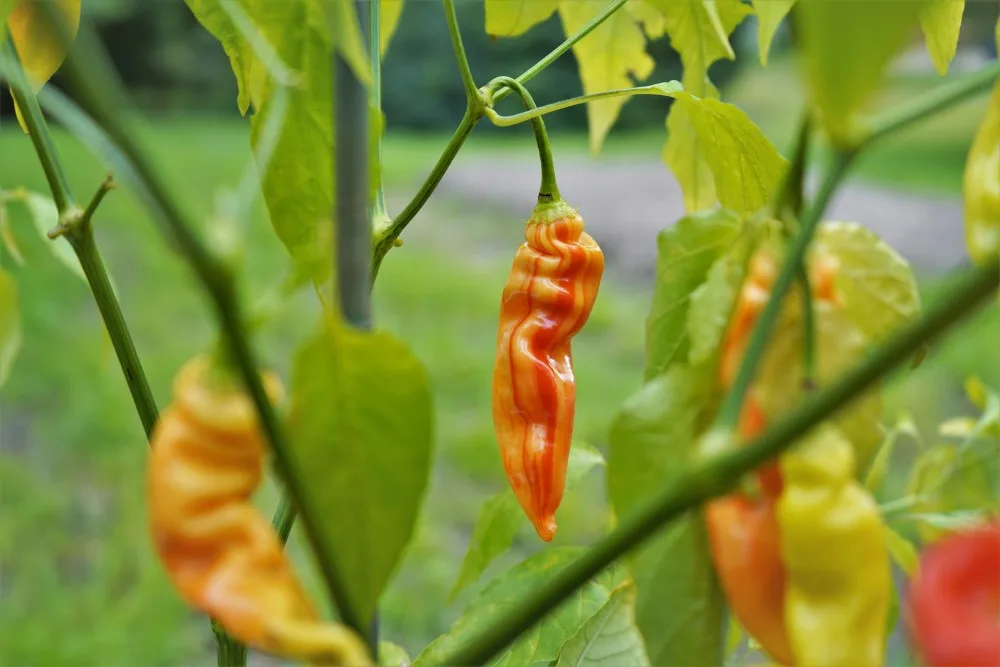
- Heat: Hot
- Flavor: Sweet and fruity
- Good for: Pickling, appetizers, hot powder
- Growing: Moderate (requires long season)
- Productivity: High
- Seeds: Bohica Pepper Hut
Welcome to the whimsical and amazing world of Capiscum baccatum peppers. The sugar rush ‘stripey’ is one of the newest additions to this species.
However, there are other sugar rush types, including the red and peach varieties. Whichever you grow, the plants will be very prolific, but will take a very long time to ripen. The plants tend to be very tall, requiring staking or support late in the season.
The flavor is delicious fresh, but can also be used to make crunchy and spicy quick pickles. None of these peppers will go to waste, as they are so versatile in the kitchen.
Aji Charapita
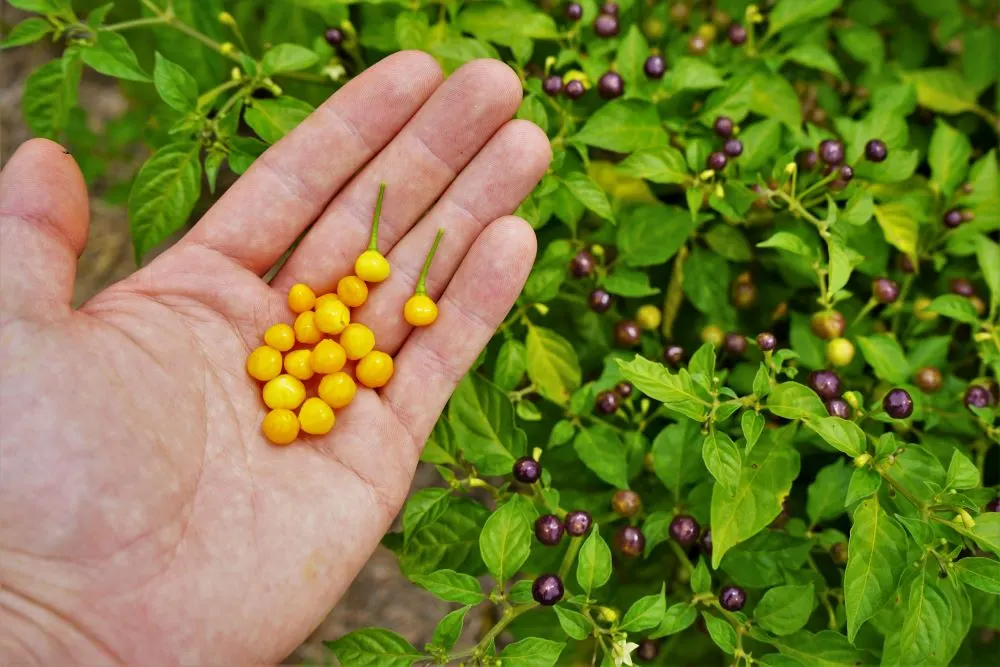
- Heat: Very hot
- Flavor: Floral, fruity
- Good for: Crushing fresh into soup or stew, dried powder
- Growing: Easy
- Productivity: Very high
- Seeds: Rareseeds
If you have a sunny spot in the kitchen for a year round plant, the aji charapita may be the perfect one for you. The berry-like pods are small and approachable, despite having significant heat.
The taste is fruity, floral, and sweet, with a nice punch of heat. These tiny peppers are great for using fresh in the kitchen. The small size is perfect for adding just enough heat without going overboard.
The plants also produce consistently throughout the season. These peppers were a delightful surprise, and instantly became one of the best tasting peppers we have tried.
7 Pot Primo Orange
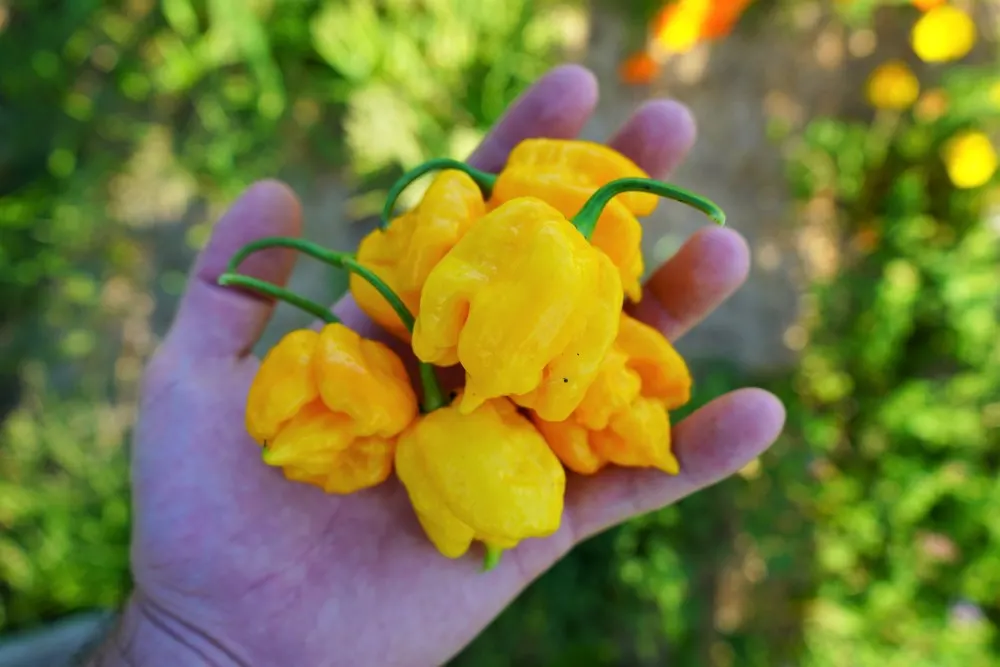
- Heat: Very hot
- Flavor: Fruity, citrusy (almost like lemon)
- Good for: Hot sauce, spicy powder
- Growing: Easy
- Productivity: High
- Seeds: Semillas la Palma
There are countless superhot peppers, but not all of them taste very good. Many of them are perfumey and flowery, making them hard to palate.
However, the 7 pot primo orange is none of these things. Like some other Caribbean varieties, this pepper is fruity, citrusy and extremely aromatic when sliced. A similar pepper that is more popular and available is the scotch bonnet.
If you like things very hot, but also want delicious flavor, this is a pepper for you. To top it all off, the plants produce early in the season (for a superhot) and in great numbers.
Death Spiral
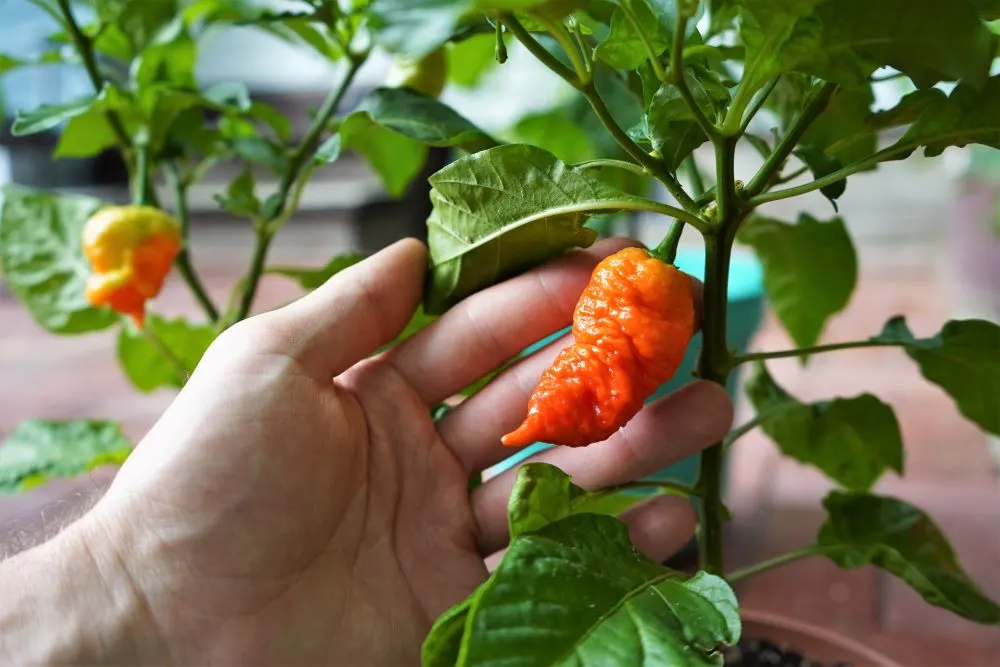
- Heat: Superhot
- Flavor: Fruity, sweet
- Good for: (Very) hot sauce, fermenting, powder
- Growing: Easy
- Productivity: High
- Seeds: Rareseeds
Okay, so if you really want to bring the heat, you can step up to the death spiral. This unique crossed variety has a gnarly appearance, with a surprisingly good taste.
Carolina reapers and some other superhots are not very tasty. The death spiral has very little floral flavor, but plenty of sweetness and fruitiness. These peppers are perfect for making a homemade fermented pepper mash for hot sauce.
That is, if you can handle the heat. If you are new to hot peppers, this is not the place to start! Flavor will quickly be consumed by scorching heat and pain – beware!
Other Tasty Pepper Varieties
With some of our very favorites covered, here are a few more of the best tasting peppers that we have grown and tasted.
- Aji amarillo – Medium heat baccatum pepper variety with fruity notes and large pods.
- Cayennetta – In 2022, we grew and tasted 7 different cayenne pepper varieties. Both of us agreed, the best tasting type was the hybrid “cayennetta.”
- Aji pineapple – Fruity and floral C. baccatum variety with high productivity and low-medium heat.
- Santaka – Japanese chili pepper with great aroma and strong, bushy plant – medium spicy.
- Nagabrains yellow – Similar flavor to 7 pot primo orange – citrusy and fruity, very hot.
- Carmen – Heat-free, hybrid sweet pepper with excellent yields and flavor.
I hope this article helps you find some of the best tasting peppers to try. All of these pepper varieties can be grown at home from seed.

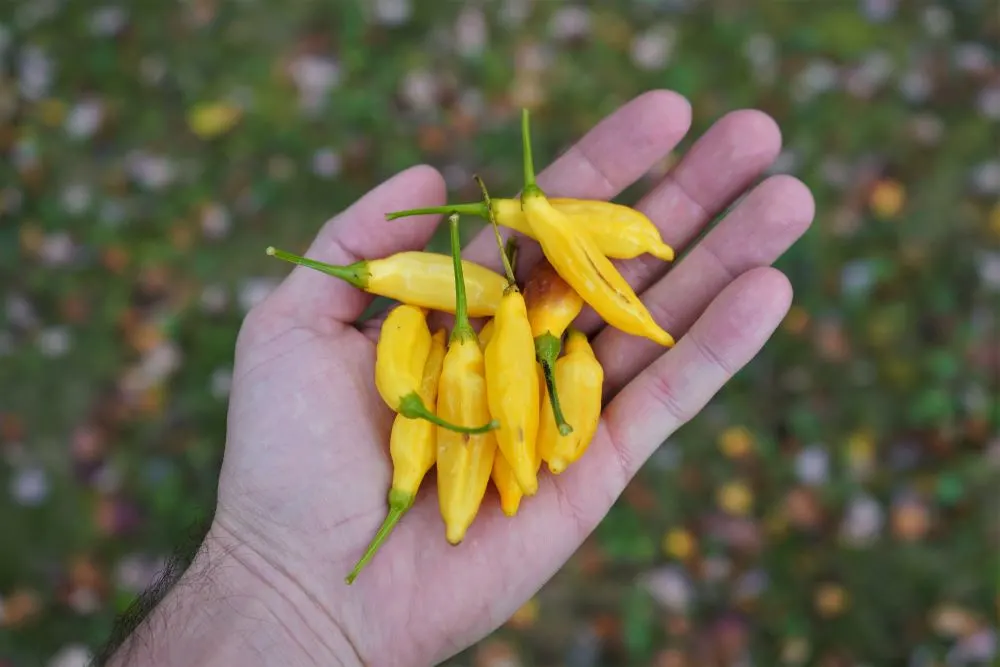

Lanidrax
Wednesday 13th of March 2024
Thanks for the list,,, I am ready for the PEPPER SEASON!!!!
B0
Wednesday 13th of March 2024
The variety "Marcato" is the sweetest red horn pepper I have ever come across; seeds available from Harris seeds. The Aji Charapita peppers are incredibly beautiful when they set fruit and I have one that I bring in each Autumn; it is 3 years old and developing into a tree form.
Bennie
Wednesday 14th of February 2024
You have to try Chilihaucle Negro, Pasilla Apaeso, Brazilian Starfish, Sugar Rush Peach
Alex
Friday 13th of October 2023
I'm surprised the KSLS didn't make the list.
Mike Catling
Sunday 8th of October 2023
I had a major problem with bacteria leaf spoton peppers. Not many survived and bordeaux mixture (copper sulphate) had minimal effect. I tried a variety "Touchdown Green Pepper" from Reimer Seeds in MD which were advertised as resistant to bls. Much success. A mild bell pepper but no BLS. Will buy again. Highly recommend if bls is a problem. Roasting peppers on the barbeque can be challenging. Would appreciate some shared techniques.
Fenelon Falls Ontario Canada
Tom
Sunday 7th of January 2024
@Mike Catling, you might consider rolling grilling baskets. They are available on Amazon and eBay.